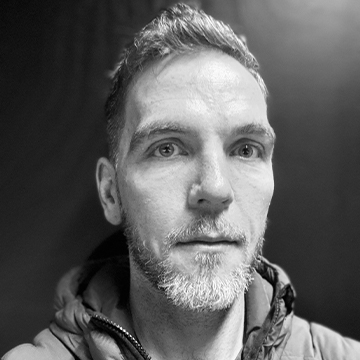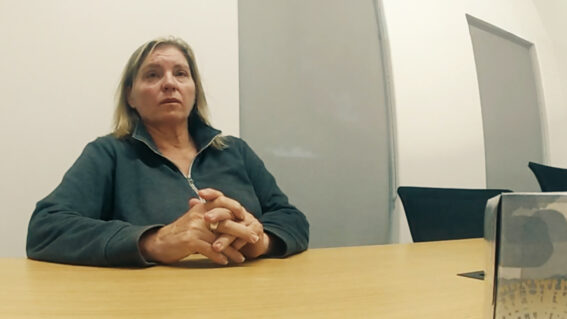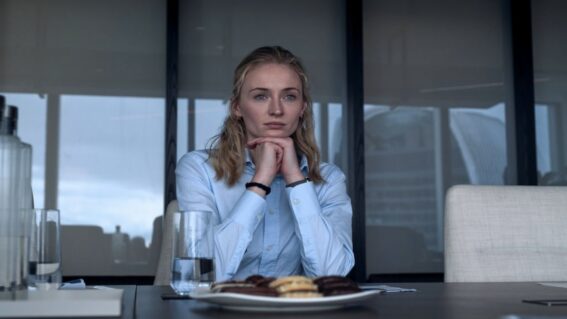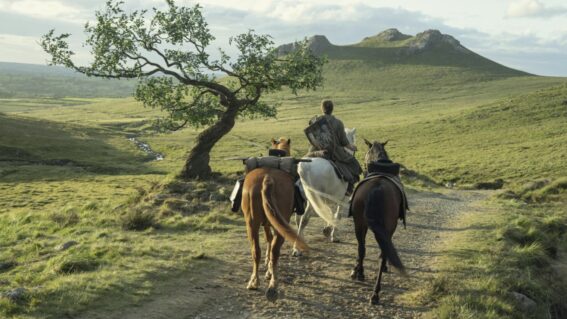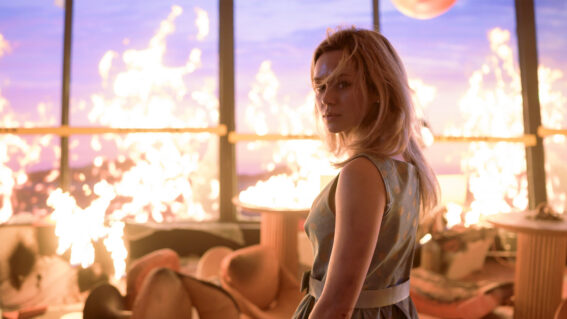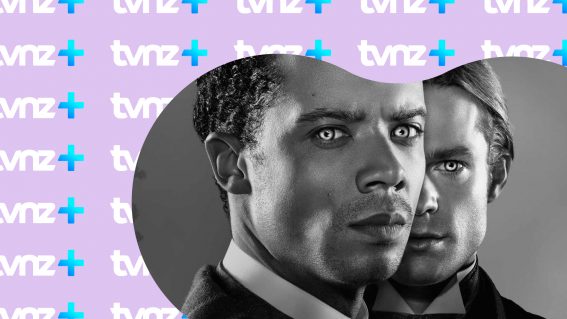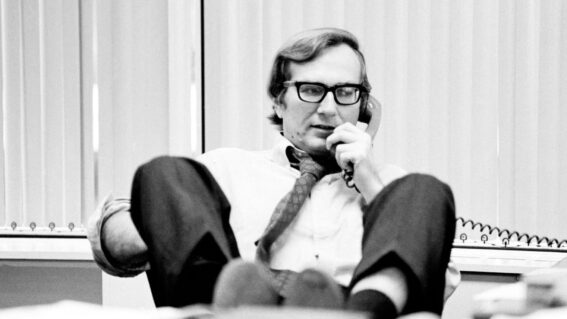We talk to NZ’s emerging filmmakers about their Day One films
Watch the latest films from NZ’s emerging filmmakers and learn about their experiences making films as part of Day One Hāpai te Haeata.
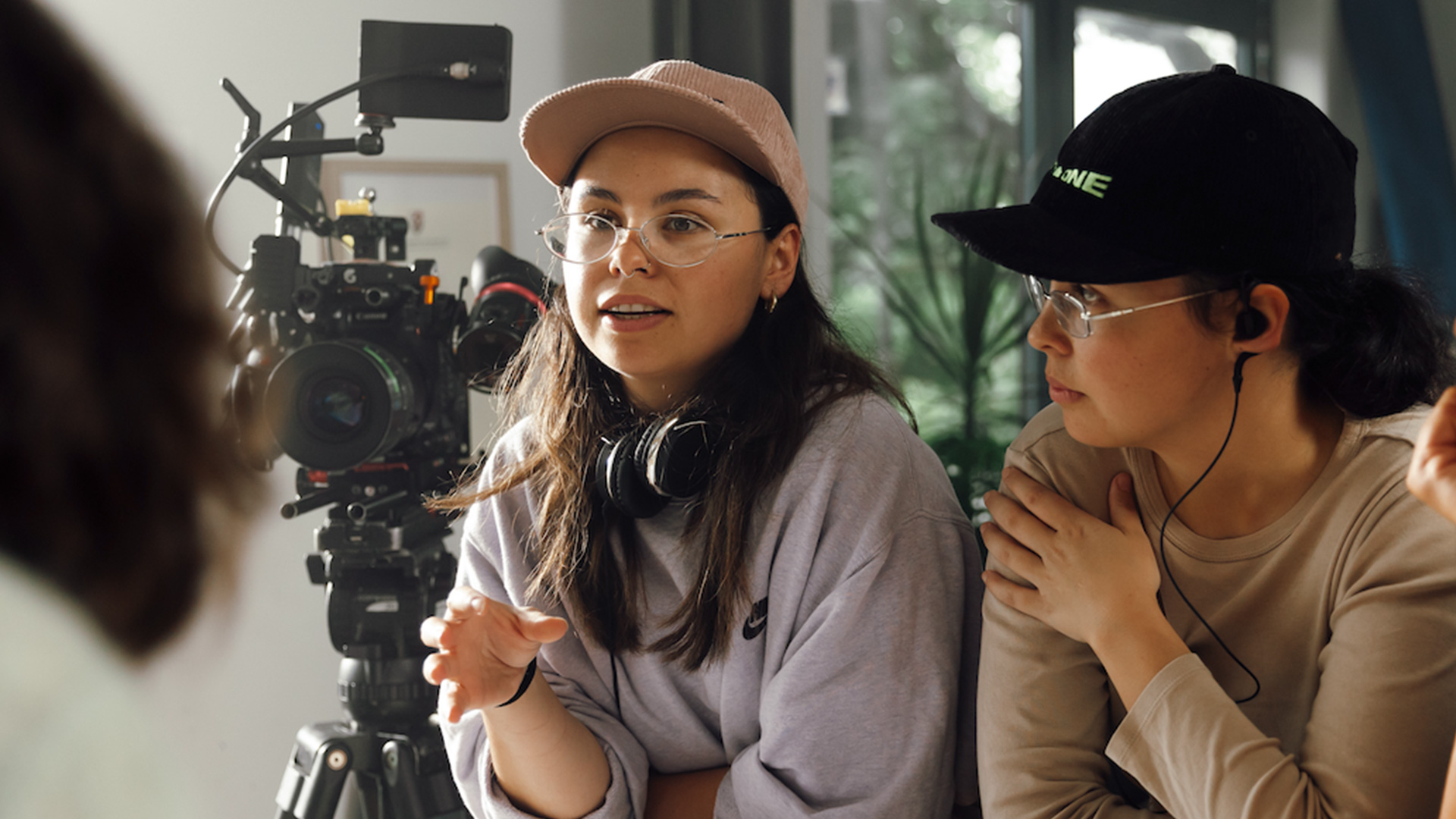
Watch the latest films from NZ’s emerging filmmakers and learn about their experiences making films as part of Day One Hāpai te Haeata.
Day One Hāpai te Haeata has just released its 2024 collection of eight short films showcasing emerging filmmakers from Aotearoa. Formerly known as Outlook for Someday, Day One’s mission statement is to help foster the talents of young cinematic storytellers from all corners of the motu by giving them the tools, guidance, and opportunities to make impact films.
We were fortunate to chat to the filmmakers behind all the shorts, getting to know their experiences making these films and what drove them to tell their stories.
Behind the White Wall
While showing a junior the ropes as a construction painter, a Korean immigrant father quietly battles the melancholia of being a whole country away from his family in writer-director Seunghoon Sung’s confident, contained drama.
The themes of the film come directly from Sung’s own experiences and observations. He tells us: “When I was young, I was helping my dad working in the construction site as a painter, and I’ve met many immigrants from South Korea, working in construction as painters… throughout the time my family were immigrating to New Zealand—I was in high school—there were certain events happening in our home country… the financial struggles that my family were going through prevented my dad going back to South Korea. He had to stay in New Zealand and put food on the table for the family, and just keep his eye on the wall and painting the wall. That was one of the powerful memories that stuck in my head.”
I asked Sung specifically about the cinematography, which potently conveyed the character’s loneliness and disconnection. “One thing that me and my DP Sofi were chatting about the most: the key word of this film is isolation… and in what we call a CCTV shot. It’s when the camera is looking down at this character, to give a sense of this character not having control in the room.”
Detangling the Stigma
In this intimate and informative documentary, director Jzayla Hughey lays out the stigma surrounding afro-textured hair by reaching into her past and experience in film.
Hughey originally didn’t plan to be the focus of the film, she tells us: “I wanted to base it on a few people I knew and their experiences with afro-textured hair. But along the way, I was encouraged to do it on my own story so I could delve deeper, which I found quite vulnerable, because I never really opened up about it on this level—even with family. I think it was almost something I needed to do. It was, in a way, a bit of a healing process.”
Hughey didn’t know what to expect when being interviewed. “All of my questions, my producer Jennifer wrote, and I didn’t hear them until in the moment filming. It’s not prepared at all. It just comes from the feelings and the thoughts in the moment. It was definitely scary being the writer and director and I’m sitting in front of the camera and I don’t quite know what they are.”
That spontaneity leads to unexpected, beautiful moments. “When I was interviewing my mum and sister, I was expecting my sister to talk a lot more but mum came out with these lines that were trailer-worthy. It was beautiful and it wasn’t planned—they just came out in the moment.” I asked if it took some convincing to get mum on board: “Yeah, it did. Mum was so nervous. But her and my sister know, through our experiences growing up, it’s an important story for us to tell. From that, they wanted to be part of it.”
Holy Ghost
A young woman’s relationship begins to waver when she starts to fall out of reality—and perhaps touching on The Great Beyond—in this film from writer-director Hannah Lynch.
Having always been interested in filmmaking, Lynch has had experiences on sets primarily as an actor and wanted to see what it would be like to tell her own stories her own way. “I just had a sense that maybe there would be something interesting visually with this particular idea—exploring mental health and mania and a religious upbringing—that there could be some really cool visual imagery. And I just thought, why not give it a go?”
First time watching it, I was particularly taken by the film’s score. Turns out, Lynch is also the composer. “The whole time we were shooting, I was going like, ‘What am I going to do when I finally get to sit down and make the score?’ I’ve been super inspired by Mica Levi who [scored] Under the Skin and Jackie. I really love scoring, so that was great and easy to communicate.”
Lemons
In possession of her estranged birth mother’s ashes, a young wahine navigates a puzzling trail of grief in director India Fremaux’s atypical reunion tale written by her twin sister Caitlin Fremaux.
“I’ve had to reckon with my own culture in the modern day,” India Fremoux told me. “I think a lot of urban Māori can relate to that, striving to represent your culture in the best way you can, but not really knowing or having the means to learn how to do that.”
While directing on this scale is new to Fremoux, her experiences as a video editor gave her some advantages on set. “I was looking at things other people might look at as whole takes. And I was already being like, ‘Okay, this part of the take will work, and that part of the last take will work.’ Whereas maybe other people would be like, ‘Oh, we’ve gotta go again. We’ve gotta get a complete take.’ But I was like, ‘This will cut together.'”
Sua: Portrait of a Retired Bus Driver
Writer-director Robert Norman’s affectionate and gently humourous portrait centres on the life of Sua, a Samoan immigrant bus driver, who shares his wit and wisdom about community, work, the streets of Auckland, and life in general.
Norman’s decision to tell Sua’s story was “much more an instinctual or visceral process than an intellectual one. I wanted to make a film about an old man, or more specifically an old Samoan man… something small, something personal and something that could feel a little homemade.”
The biggest advantage of making a film under the Day One initiative? For Norman, it was access. “Namely to the other filmmakers. It can be very comforting to know that you’re not the only one looking for an escape hatch in the middle of production.” That comfort included “talking shit with Seunghoon.”
Taurewarewa
Ayesha Hourston, Dr. Ruby Hinepunui Solly, and writer-director Libby Witheford-Smith talk frankly and openly about their experiences with bipolar disorder in this delicate documentary, setting the scene alongside Aotearoa’s turbulent oceans.
“I’ve always been willing to share bits of myself that I feel should be talked about more,” Witheford-Smith explains. When it came to finding the other two members of the documentary: “Ayesha is basically a friend of a friend of a friend—I’m so grateful for that organic connection—and I had owned [Ruby’s] poetry book the year prior. She’s a very talented individual. I went to one of her concerts which she was playing taonga pūoro and the cello. We had a good chat [afterwards] and a lot of relatability going on in terms of what it felt like to be in the lowest of the lows.”
I wondered what the biggest challenge of production was. “People talk about how they pull all-nighters. They sacrifice so much to keep things going. And I’m personally aware that I can’t do that. Sleep is so important for brain health—quadruple so with bipolar brains.” For the sake of all sleep-deprived filmmakers out there, I asked for Witheford-Smith’s secret to a good night sleep during filmmaking: “I really have to thank Lily Groenhart. She’s one of my best mates, and my producer. She is so fantastic in general, and also with organising everything—we made sure neither of us ever had too much on our plates.”
Wilbert Wire
Writer-director Ricky Townsend’s heartfelt sci-fi comedy centres on a cyborg at an art class who, singled out by a disgruntled teacher, is tasked with painting a piece that expresses love.
For Townsend, this film was a way for him to relay what the autistic experience meant to him and tackle certain perceptions of autism. “In media, we tend to associate autisticness with roboticness. You think of like Spock from Star Trek, I, Robot, or Rain Man… there’s always been this association. That inspired me to think: what happens if I actually took that trope, explored it head-on, and subverted that?”
Townsend wraps the film around a standout performance from Josiah Morgan as Wilbert Wire. The pair have worked together in the past, and it shows, especially with the film’s centrepiece train sequence. “We talked a lot about Buster Keaton and Rowan Atkinson. Josiah has a huge background in physical theatre. To pitch the film, we shot a proof of concept of the invisible train scene, which was a way to help sell the story, but was also a great chance for [him] and I to create and make quite freely. I find, especially when you’re on set, it’s always tricky to do that when you’re on a schedule. So it gave us permission to explore that scene quite openly.”
Yeah Pare
Directors Sean Dioneda Rivera and Albert Latailakepa turn Auckland’s night markets into an adventure for one young boy who gets lost, goes on a quest, befriends the son of a stall holder, and gains life XP.
Rivera recalls how he and Latailakepa came up with the idea while at the night markets. “I think we were both struck by being there together, how beautiful it was that this is the one place where both of our cultures are at the forefront. It’s this real fusion of Pacifika culture and Asian culture, everywhere. We just thought it was really special.” When it came to the RPG aesthetic: “Albert play a lot of video games, and I think we really wanted to capture the world through the eyes of children and how they might twist the world to make it more exciting, more beautiful, or more interesting to them. And that was our way into that world—through video games, JRPGs, fantasy, and adventure.”
If the film’s location looks familiar, it’s because they shot at the real night markets. “Actually, across three different night markets,” Rivera added. “We shot at the Henderson, Botany, and Mount Wellington night markets… [all] run by two people, which we found quite amazing. Danny, our producer, got in contact with them really early and we paid for a stall space—like how any other vendor would. But instead of having a store, we had a unit base and would roam around the night markets making a ridiculous film. That was also such a highlight for us, coming into contact with all these beautiful vendors and generous people who were willing to help us make this film into what it was. It felt like a real community project.”
